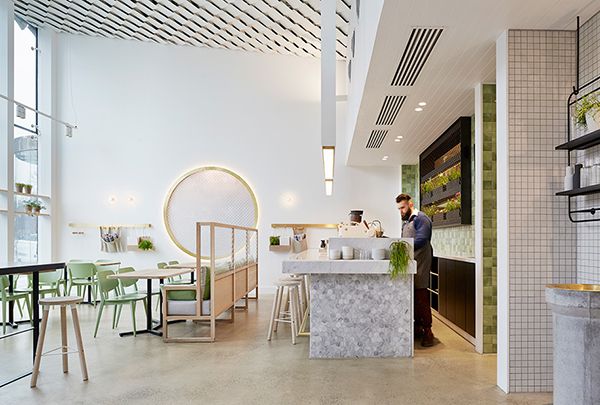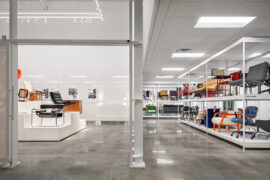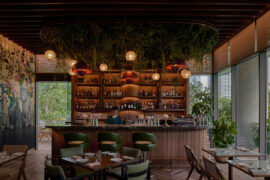“It’s what’s on the inside that counts,” is the motto of designer Kestie Lane, founder of Kestie Lane Studio. And for this designer it’s heart and soul for what she does, as well as a quiet confidence and effortlessness that emanates in her work. Rebecca Gross writes.

June 20th, 2016
Kestie Lane reached two career milestones this year. The first marks twenty years in the design business, the second marks the first year of her new-found design practice Kestie Lane Studio, and certainly Kestie’s portfolio of work speaks to both her experience and success. With a designer-maker background, Kestie’s hands-on approach, honest use of materials and penchant for craftsmanship is evident in her projects that range from much-loved restaurants and boutique offices to multi-residential projects.
Now based in South Yarra, Melbourne, Kestie started her career at Jam Factory in Adelaide where she undertook a three-year internship in product and furniture design. “I learnt a lot about construction and detailing and how things are put together,” says Kestie who continues to pay great attention to detail, tactility and the high-quality craftsmanship of fittings and furniture.
“On each project I try to design bespoke elements unique to that project, which in turn can form part of a product range I am developing in the studio,” Kestie explains. “We’re always involved in the production process working closely with joiners, fabricators and bespoke makers.”
Kestie’s projects have a calm, confident and inviting aesthetic, and like the award-winning interior of The Kettle Black, which she created with her former design partner at Studio You Me, they are infused with warmth and soul. “Apart from beautiful design, an interior needs a client’s personality and their life experiences to give the design soul and the special element you can’t quite put your finger on,” says Kestie. “It’s very important to have that come through the work.”
The designer’s timeless aesthetic also speaks to the longevity of her work, which includes the street furniture designed for the City of Adelaide more than fifteen years while working as a partner at Studio Arketype. “I love returning to Adelaide to see all the furniture still part of the streetscape. It gives me a real kick to know that fifteen years on it is being used everyday,” she says. “It’s so nice to see that your design has longevity and is still useful.”
As a designer-maker, quality and honesty – to construction, materials and clients – continue to underpin Kestie’s approach to design and her refined and crafted feel-good spaces. “They have a sense of confidence, elegance and, I hope, a sense of humour,” says Kestie. “I take work seriously, but not too seriously; its design after all.”
Kestie Lane Studio
kestielanestudio.com
INDESIGN is on instagram
Follow @indesignlive
A searchable and comprehensive guide for specifying leading products and their suppliers
Keep up to date with the latest and greatest from our industry BFF's!

London-based design duo Raw Edges have joined forces with Established & Sons and Tongue & Groove to introduce Wall to Wall – a hand-stained, “living collection” that transforms parquet flooring into a canvas of colour, pattern, and possibility.

The undeniable thread connecting Herman Miller and Knoll’s design legacies across the decades now finds its profound physical embodiment at MillerKnoll’s new Design Yard Archives.

Wilson & Market is the new flagship restaurant located at the Prahran Market. The eatery includes a ‘hole-in-the wall’ take-away window, a café that extends into the market square and a brasserie and bar with an entrance off Commercial road – a reimagined model of a highly traditional format.
The internet never sleeps! Here's the stuff you might have missed

Grounded by the rich warmth of American white oak, The Standard’s newly opened restaurant, Kaya, redefines the classic dining convention through a tasteful fusion of biophilic design, mid-century modern sensibility and elevated whimsy.

In this comment piece, COX Principal David Holm reflects on Carlo Ratti’s curatorship in which climate, colonisation and gender equity took centre stage at the Venice Biennale.